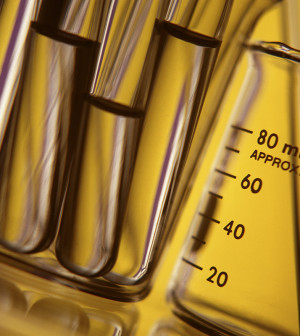- Understanding the Connection Between Anxiety and Depression
- How Daily Prunes Can Influence Cholesterol and Inflammation
- When to Take B12 for Better Absorption and Energy
- Epsom Salts: Health Benefits and Uses
- See What Saffron Can Do for Sleep and Heart Health
- 6 Common Mistakes to Avoid Before Your Physical
- Can Sweating Really Help You Beat a Cold?
- Strengthening Your Relationship: Practical Strategies
- Skip Storing This Everyday Product in the Fridge Door
- Green Tea + B3 Pairing May Boost Brain Health
Varicose Vein Treatments All Work, but Aren’t Quite Equal


Three common treatments for painful varicose veins all ease symptoms, though there may be small differences in quality of life months later.
That’s the conclusion of a clinical trial that compared the three treatments — surgery, laser ablation therapy and injections of a chemical foam (sclerotherapy). British researchers found that among nearly 800 patients they treated, all of the therapies relieved symptoms such as pain, swelling and itchy skin to a similar degree.
Laser therapy was least likely to cause minor complications such as bleeding or bruising during the procedure, the researchers report in the Sept. 25 issue of the New England Journal of Medicine.
Six months later, patients who’d received foam injections were giving slightly lower ratings to their quality of life, versus those who had surgery or laser therapy.
But the average difference was “minor,” and unlikely to reflect a big impact on people’s lives, according to Dr. Peter Gloviczki, a vascular surgeon at the Mayo Clinic in Rochester, Minn. Gloviczki was not involved in the study.
“Basically, this is a well-designed study that shows these treatments are similarly effective and safe,” Gloviczki said.
Still, he added, the study followed patients for only six months, so the findings say nothing about the treatments’ “long-term durability.”
Varicose veins are a common condition where veins in the legs weaken, then gradually swell and become twisted. Up to 40 million Americans have varicose veins, according to the Society for Vascular Surgery — often because of obesity, lack of exercise, or multiple pregnancies.
Visible varicose veins are usually no more than a cosmetic nuisance. But sometimes they cause symptoms like pain, leg cramps, swelling in the ankles and feet, and itchy skin.
Traditional surgery to remove the problem veins is no longer commonly used in the United States, Gloviczki said. But it may be necessary when the varicose veins are particularly large, he added.
The other two treatments — laser ablation and foam injections — work by causing varicose veins to close off, according to the Society for Vascular Surgery. In laser ablation, heat is applied to the interior of the vein, through a thin tube threaded into the vessel. Foam injections release chemical irritants into the vein wall, which eventually causes the vessel to collapse and disappear.
Studies have already shown that the therapies are good at “obliterating” problem veins, according to Dr. Julie Brittenden, the lead researcher on the study and a professor of vascular surgery at the University of Aberdeen in Scotland.
But this study, Brittenden said, is the first to compare the three treatments in terms of how patients rate their quality of life six months later.
Overall, her team found, patients were happier versus their pretreatment days.
The foam patients, however, did report somewhat less improvement in their “disease-related” quality of life — which measures things like pain medication use and self-consciousness about wearing leg-baring clothes, according to the study.
Despite that, Gloviczki said he thinks the findings will “give a boost to foam” as a treatment option for varicose veins. Right now, the most common treatments are laser ablation and a similar procedure that uses radiofrequency waves as the heat source — which, Gloviczki noted, is his personal preference.
“But foam is less invasive than ablation,” he conceded, “and it’s usually less expensive.” On the other hand, Gloviczki added, it may take multiple treatments for foam injections to work.
In the current study, foam injections were least likely to fully knock out the main branches of the great saphenous vein, which runs the length of the leg. Foam was only successful in the main branches of this vein for 55 percent of patients, versus over 80 percent of patients treated with surgery or laser therapy, the study reported.
“Patients should be aware that if I use foam, there is a good chance I’ll have to treat you again in the next few years,” Gloviczki said.
Brittenden agreed that repeat treatments may be more likely with foam. As for costs, she said her team is looking at how things balance out over five years, so they can take those repeat treatments into account.
The bottom line, Gloviczki said, is that patients have to discuss the pros and cons of various treatments with their doctor. He added, though, that individual doctors tend to stick with one or two therapies that they prefer.
More information
The U.S. National Heart, Lung and Blood Institute has more on varicose veins.
Source: HealthDay
Copyright © 2026 HealthDay. All rights reserved.










